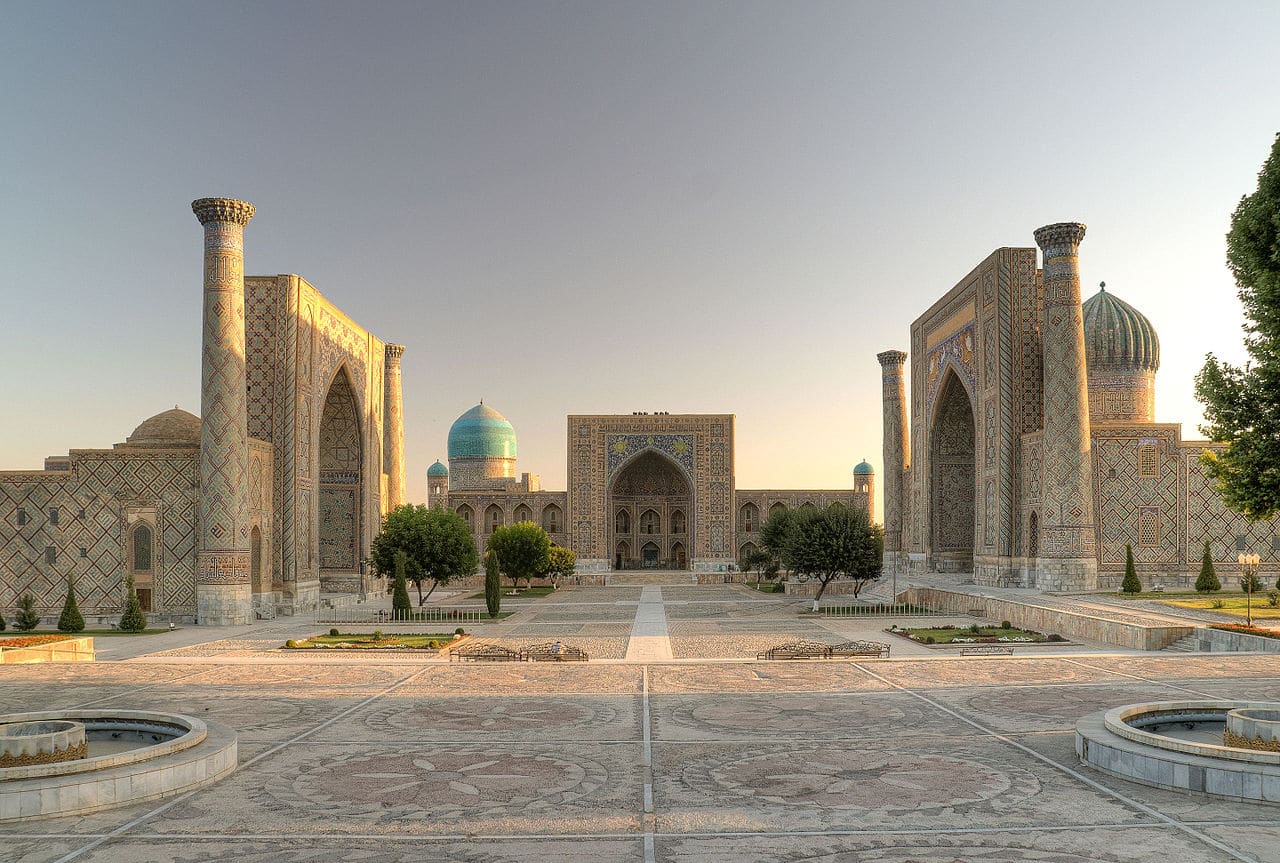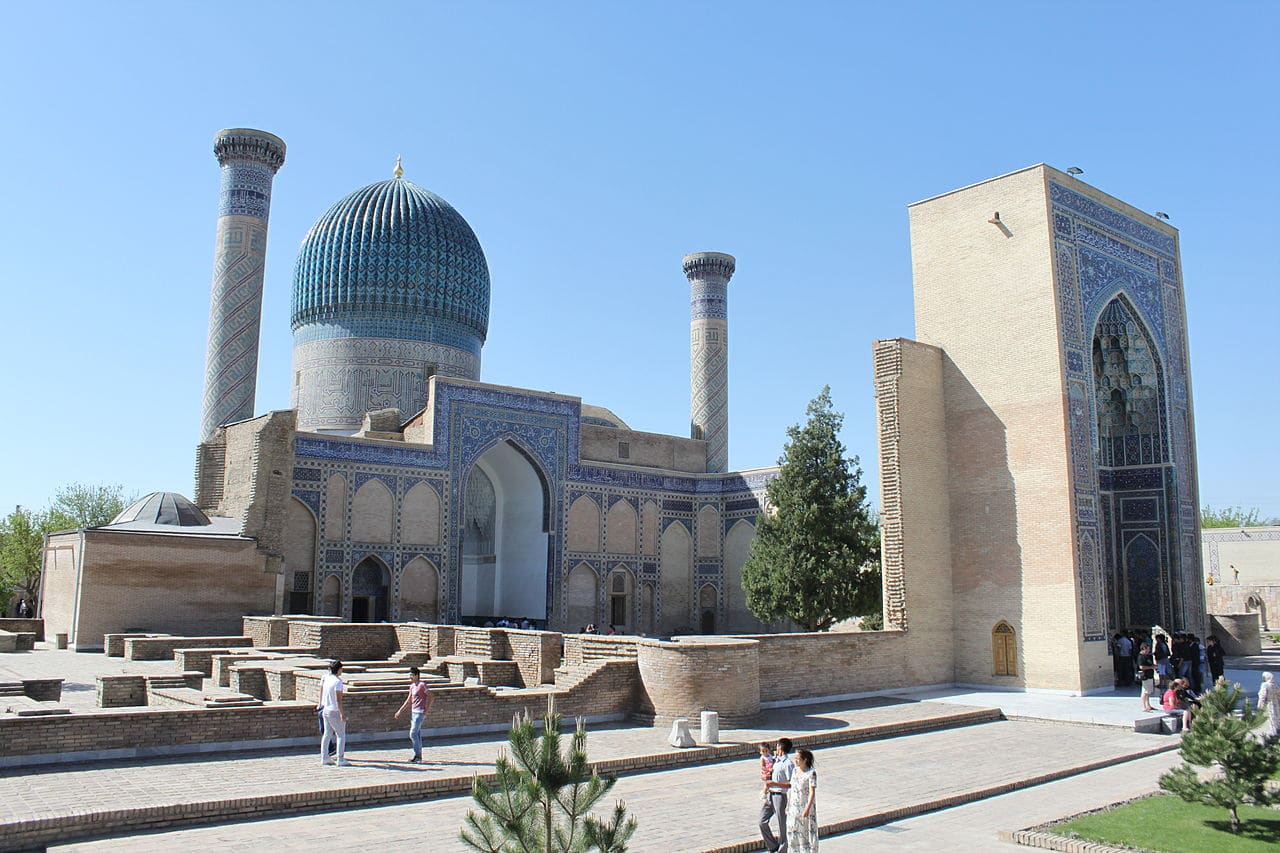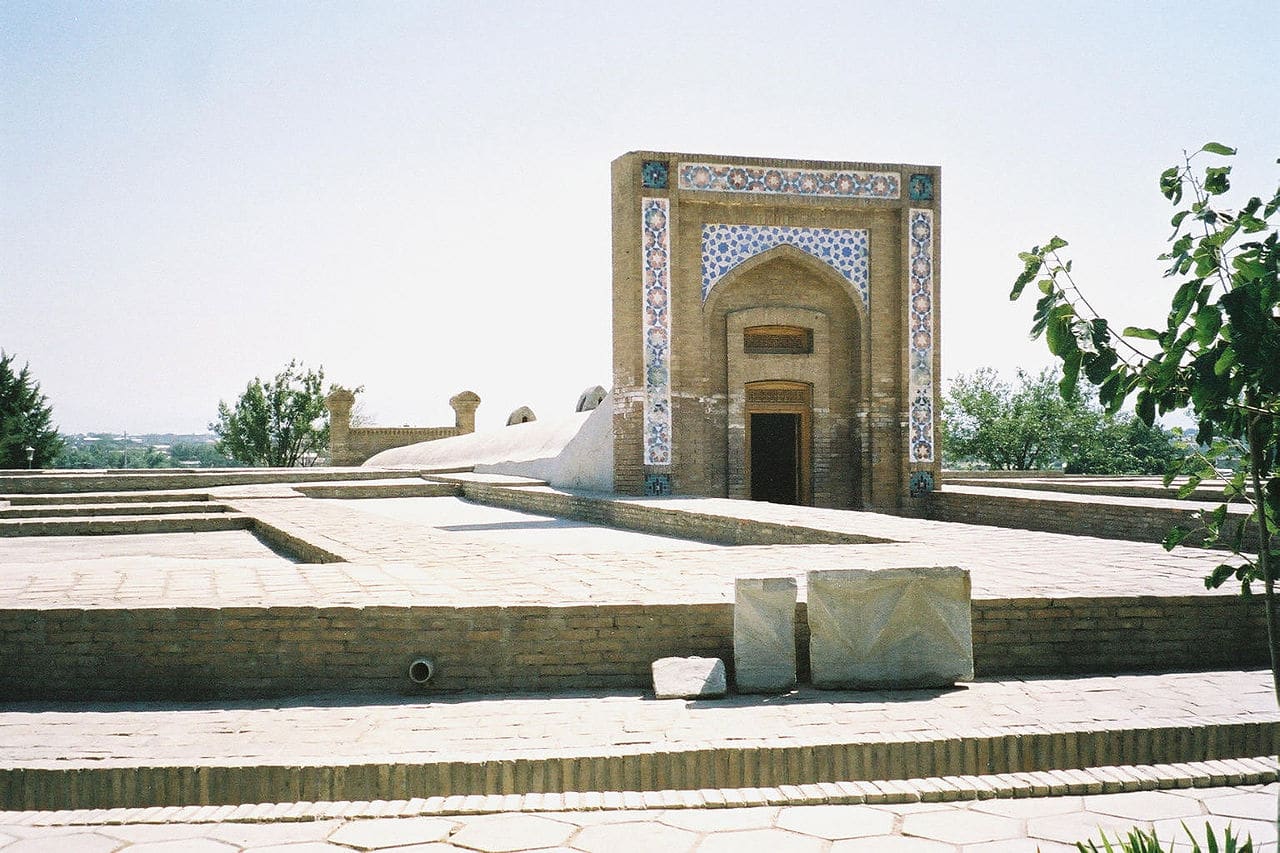
Samarkand is one of the main cities of Uzbekistan, one of the countries born after the fall of the Soviet Union. However, its history goes back many centuries, specifically to VII BC.
Declared Heritage, Samarkand makes us think of scenarios of 'Arabian Nights' for its exuberant Asian image. But, above all, because it was the capital of the mythical empire of Tamerlane, the last great Mongol conqueror, a territory that stretched from India to Turkey. And also because it was one of the places of passage of the no less legendary Silk Road, which linked China with southern Europe. If you want to know more about Samarkand, we invite you to follow us.
What to see in Samarkand
With approximately half a million inhabitants today, everything in Samarkand reminds us of its glorious past. Mosques of extraordinary beauty, impressive mausoleums and curiosities such as the Ulugh Beg Observatory are some of the things you can see in the city. Let's get to know them.
Registan
This is the name given to the great esplanade around which Samarkand was built. Kings were proclaimed in it, but the most beautiful thing is the three madrasas that frame it. As you know, schools where Islam is taught as well as serving as places of worship are named after this.
The ones you can see in Registan are the Ulugh Beg madrasa, built in the XNUMXth century; the by Sherdar, a replica of the previous one from the XNUMXth century, and the by Tilla-Kari. Built with all the luxuries, they are a perfect example of the islamic architecture.

Bibi Khanum Mosque
Bibi Khanum Mosque, one of the most spectacular in Samarkand
However, one of the most spectacular monuments for its beauty and grandeur is the Bibi Khanum mosque, of whose size you will get an idea if we tell you that the main door measures thirty-five meters. It also had four minarets and a large central courtyard framed by four hundred white marble columns finished in domes.
As if all this were not enough, there is a beautiful legend that has to do with its construction. This says that it was built by order of Bibi Khanum, wife of Tamerlane. In the process, the architect fell in love with her and stopped the works until she kissed him. Apparently, the kiss left its mark on the emperor's wife, which made him find out what happened. He searched for the architect throughout his lands to kill him, but he had already died, although he had previously finished the mosque. Right next to her is the Bibi Khanum mausoleum.
Gur-e-Amir Mausoleum
However, the most spectacular mausoleum in Samarkand is that of Gur-e-Amir, which literally means "Tomb of the king". And it is that in him he is buried Tamerlane. It is octagonal in shape but is crowned by a huge dome. It is very well preserved and is said to have served as a model for other great tombs such as the Taj Mahal of Agra.
The Shan-i-Zinda necropolis
It is an impressive funerary complex formed by sanctuaries y about twenty mausoleums in which some of the most important characters of the Timurid dynasty, initiated by Tamerlane himself, were buried. It is even said that he is buried there Qusam ibn Abbas, cousin of the prophet Muhammad who brought Islam to these territories.
The Ulugh Beg Observatory
We have already mentioned this character to you before. He was the grandson of Tamerlane and, in addition to being the ruler of the area, he was a great astronomer. So much so that his fame even reached Europe. Around 1420 he ordered the construction of a large observatory that included a huge sextant three stories high to obtain the most exact position of the stars.

Gur-e-Amir Mausoleum
Although this observatory was destroyed in 1449, its remains were unearthed at the beginning of the XNUMXth century and today it is a museum where you can even see the famous sextant.
The archaeological site of Afrasiab
Afrasiab was the forerunner city of Samarkand. Founded, as we have already told you, in the XNUMXth century BC, it was named in honor of the king who built it. It is located northeast of Samarkand and the remains found at this site are in the Afrasiab Museum.
Among them, there are some as curious as the oldest chess pieces in the world and various wall paintings. It also houses the supposed tomb of the prophet Daniel, an immense sarcophagus that measures eighteen meters. It is so large because, according to legend, its occupant grows an inch each year.
Siyob Bazaar
Another of the visits that you must do in Samarkand is that of its bazaars. The largest is that of siyob, which is very close to the Bibi Khanum mosque. It is a perfect place for you to try the typical products of the area such as dates, nuts or the so-called samarkand bread. You can even savor dishes like the plow, a rice prepared with meat, spices, quail eggs, chickpeas, raisins and carrots; the shasliks, a kind of meat skewers, or the gummas, vegetable patties and other condiments.
What is the best time to travel to Samarkand
The city of Uzbekistan presents a Mediterranean climate. Winters are cold and summers are very hot, with days that can exceed forty degrees in temperature. For its part, rainfall is scarce. All this makes us advise you to travel to Samarkand in spring. The weather is pleasant and there is not as much tourism as in summer.
How to get to Samarkand
The city has a international Airport. However, it only receives flights from neighboring countries such as Russia or Türkiye. Therefore, the best way to get to Samarkand is the railway. From Tashkent, the capital of Uzbekistan, you have a high-speed line known as afrosoiyob.

Ulugh Beg Observatory
You can also do the route in bus, but it takes about six hours so we don't recommend it. Once in the city, the most common way to get around it is the shared taxis. They are quite cheap although they have the disadvantage that they do not start until they are full. Another option is calls matrushkas, vans that carry up to fifteen people and that are cheaper but also slower.
In conclusion, Samarkand is a beautiful destination to travel. Declared a World Heritage Site, its great mosques and mausoleums, its bazaars and its unmistakable oriental aroma will transport you to the exuberant world of 'The Thousand and One Nights'.